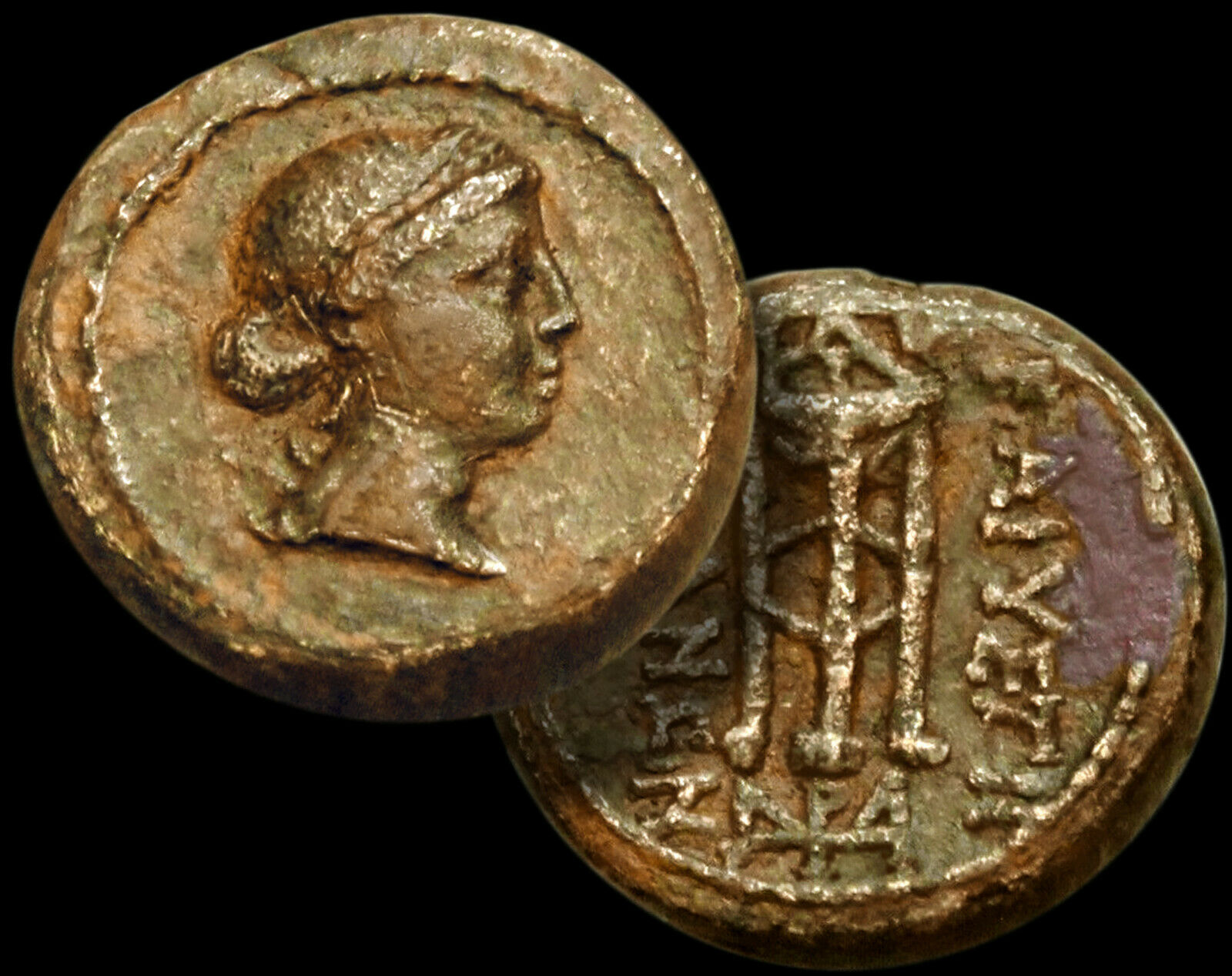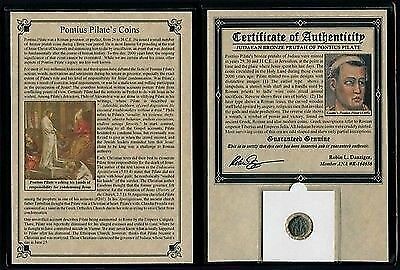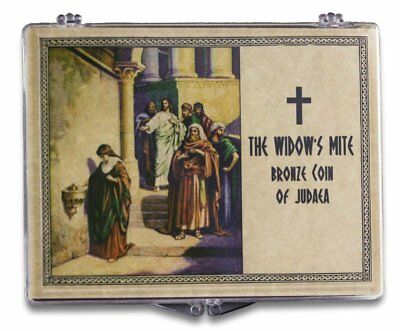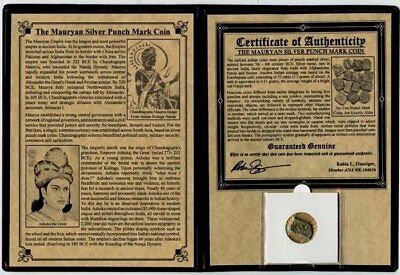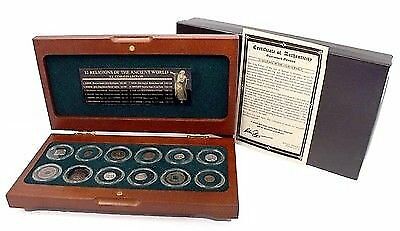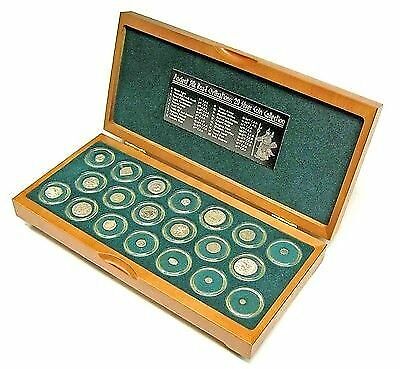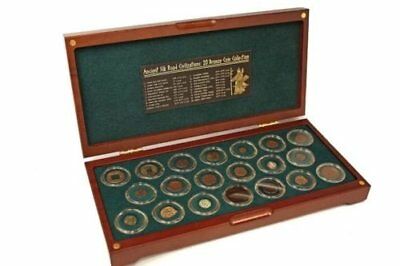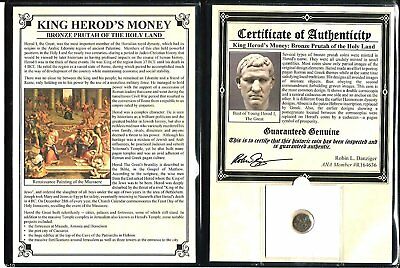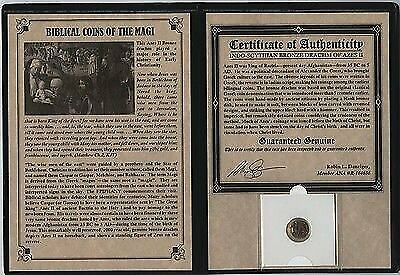-40%
APOLLO - TRIPOD / Kaystriani, Lydia - 261-246 BC. Æ Autonomous Coin +COA GGcoins
$ 39.6
- Description
- Size Guide
Description
Kaystriani, LydiaAE. Autonomous
circa; 200 - 201 BC.
Size: (13.6mm) / Weight: (3
.3gm)
This may well be a rarity as a Referance was
very difficult to locate, this was the only one that is available...
Obverse:
Head of
Apollo
facing right...
Reverse:
KAYΣTΡI-ANΩN, Tripod,
monogram beneath...
Ref:
Paris M4932
Personalized COA included
The Coin:
this
is
an excellent example of a bronze B.C.
era coin
,
struck well before Christ...!
it saw some use before it found a safe place
to wait out the centuries.
Always Authentic, I have never knowingly sold a copy or reproduction!
As grading
is subjective please Judge the coin photos to determine this for yourself.
_________________________________________________________________
History: of coin images
Apollo
was a major Greek god who was associated with the bow, music, and divination.
The epitome of youth and beauty, source of life and healing, patron of the civilized arts,
and as bright and powerful as the sun itself, Apollo was, arguably, the most loved of all the
Greek gods. He was particularly worshipped at Delphi and Delos, amongst the most famous
of all religious sanctuaries in the Greek world.
Apollo’s most direct presence amongst the Greeks, though, was manifested in his oracle at
Delphi, the most important in the Greek world. According to legend, Apollo, wishing to reveal
to humanity the intentions of his father Zeus, created the oracle on the site where he had
killed the serpent (or dragon) Python. The Panhellenic Pythian games were begun at the site
in order to commemorate the death of this divine creature. Tripods and laurel wreaths were
given as prizes to the victors at these games.
The 30 treasuries built at Delphi by various cities indicate the popularity of the god and the
sanctuary in the wider Greek world.
Birth & Family
Son of Zeus and Leto, and the twin brother of Artemis, Apollo was born on the island of Delos
(in Hesiod’s Theogony he is clutching a golden sword). His mother, fearful of revenge from
Zeus’ wife Hera, had chosen barren Delos as the safest retreat she could find.
At his first taste of ambrosia, he was said to have immediately transformed from babe to man.
Apollo was then given his bow, made by the master craftsman of Mount Olympus, Hephaestus.
As with the other major divinities, Apollo had many children; perhaps the most famous are
Orpheus (who inherited his father’s musical skills and became a virtuoso with the lyre or kithara),
Asclepius (to whom he gave his knowledge of healing and medicine) and, according to the
5th-century BCE tragedian Euripides, the hero Ion.
Apollo is a significant protagonist in Homer’s account of the Trojan War in the Iliad.
On the side of the Trojans, he gives particular assistance to the Trojan heroes Hector,
Aeneas, and Glaukos, saving their lives on more than one occasion with his divine intervention.
He brought plague to the Achaeans, led the entire Trojan army (holding Zeus’ fearsome aegis)
in an attack which destroyed the Achaean defensive walls, and was also responsible for guiding
Paris’ arrow to the heel of Achilles, killing the seemingly invincible Greek hero. Apollo is most
frequently described by Homer and Hesiod as the ‘far-shooter’, the ‘far-worker’, the ‘rouser
of armies’, and ‘Phoebus Apollo’.
Apollo generally played the dutiful son to Zeus, father of the gods, and never attempted to
usurp his position (unlike Zeus who had overthrown his own father Cronus).
The pair did have a serious falling out when Zeus killed Asclepius after he had used his
marvellous medicinal skills to bring a mortal back to life. In revenge, Apollo then killed the
Cyclopes, the one-eyed giants who made Zeus’ thunderbolts.
As punishment, Apollo was obliged to spend a year in the humble service of Admetus of Therae,
tending the king’s sheep.
Apollo acquired his lyre from his mischievous half-brother Hermes, the messenger god.
While still a baby, Hermes had stolen Apollo’s sacred herd of cattle, cleverly reversing their
hooves to make it difficult to follow their tracks. Hermes was permitted to keep his ill-gotten
gains but only after he gave Apollo his lyre which he had invented using a tortoiseshell.
Apollo’s darker side as the bringer of plague and divine retribution is seen most famously when
he is, with his sister Artemis, the remorseless slayer of Niobe’s six (or in some accounts seven)
sons as punishment for her boasting that her childbearing capacity was greater than Leto’s.
Another hapless victim of Apollo’s wrath was the satyr Marsyas who unwisely claimed he was
musically more gifted than the god. The pair had a competition and the Muses ruled that Apollo
was indeed the better musician. Apollo then had the mortal flayed alive for his presumption and
nailed his skin to a pine tree. The tale is an interesting metaphor for the competition between
(at least to Greek ears) the civilised and ordered music of Apollo’s lyre and the wilder, more
chaotic music of Marsyas’ flute. Apollo won another musical competition, this time against the
pastoral god Pan and, judged the victor by King Midas, Apollo thus became the undisputed
master of music in the Greek world. The god’s defeat of Marsyas and Pan may reflect the
Greek conquest of Phrygia and Arcadia respectively.
Apollo oversaw the initiation rites performed by young males (ephebes) as they entered the
full civic community and became warriors. Rituals in this process involved cutting hair and
offering it to the god, as well as athletic and martial challenges. The god is frequently associated
with the sun (as Phoebus Apollo) and the sun god Helios, but modern scholars mostly agree
that the link between Apollo and Helios does not go further back than the 5th century BCE.
Apollo continued to inspire the Romans when he was principally considered a god of healing.
Octavian, the future emperor Augustus (r. 27 BCE - 14 CE), famously claimed the god as his
patron and even dedicated a temple to Apollo at Actium. The god of moderation was a useful
association and in direct contrast to the god of excess, Dionysos, championed by Octavian’s
no. 1 enemy, Mark Antony.
Perhaps the most celebrated representation of Apollo in ancient Greek art is the statue which
dominated the centre of the west pediment of the Temple of Zeus at Olympia (c. 460 BCE).
Here, in a majestic pose, he brings order and reason to the battle between the Lapiths and the
Centaurs at the wedding of Peirithoos. Another fine example of Apollo in his guise as a handsome
youth, this time with long locks, is a 2nd-century CE marble relief from a funerary monument in
Piraeus.
The head of Apollo frequently appeared on Greek coins, notably on the silver tetradrachms
of 5th-century BCE Catane (Catania) in Sicily and the gold staters of Philip II of Macedon
(r. 359-356 BCE).
Roman sculptors were also fond of Apollo and a celebrated marble statue of the god, now in
the Vatican Museums in Rome, is the Apollo Belvedere, a 2nd-century CE copy of a bronze
statue of the 4th-century BCE by Leochares. Even the Etruscans were at it, perhaps one of
their most famous sculptures in terracotta being the Apollo of Veii (c. 510 BCE), a striding figure
of the god, known to them as Aplu, which once stood on the roof of a temple.
________________________________________________________________
Photos are of the actual coin that you will receive..!
Authenticity is guaranteed or your 100% money back. Please ask any question
Certificate of Authenticity--(COA):
What is a certificate of authenticity and what guarantees do you give that the item is authentic?
Several of the Ancient Coins sold here are provided with a Certificate of Authenticity, and a
Lifetime Guarantee of Authenticity
, issued by the owner and Art-antique enthusiast that has identified
thousands of ancient coins and has provided them with the same guarantee. You will be very happy
the relevant information and a picture of your coin that is purchased in this listing.
Additionally, the coin is inside it's own protective coin flip (holder).
On the free-market such a presentation alone, can be considered a - value all in itself, and
it comes standard with your purchases from me, FREE. With every purchase, Whether your goal
is to collect or give the item as a gift, coins presented like this could be more prized and valued
higher than items that were not given with such care and attention.
-------------------------------------------------------------------------------------------------------
Payment info:
Payment should be sent within 3 business days from the auction's end. We accept PayPal in $USD
Return policy:
I offer 30 day money back guarantee for this coin upon it's safe return,
if you are not happy with your purchase, I also offer a
LIFETIME money back guarantee
if this coin is ever found to be Not Genuine or Historically Authentic by one of the Ebay
approved coin grading services... My goal is always your happiness and confidence in
purchasing my coin, in it's authenticity, numismatic and historic value!
Shipment info:
We usually ship within 2-3 business days after payment is cleared.
Please allow up to 5-7 days for item to be delivered ,
Orders over USD 250.00. will be Insured. We will only ship to your registered
PayPal address. Please be sure your address is correct before paying for the invoice.
International fees
will be determined by the
eBay Global Shipping
calculator
for your location!
International Buyers – Please Note: Import duties, taxes, and charges are not
included in the item price or shipping cost. These charges are the buyer's responsibility.
Please check with your country's customs office to determine what these additional
costs will be prior to bidding or buying.
"Frequently Asked Questions"
How long until my order is shipped?
: Please allow 3 business days for shipment of
your order, after the receipt of payment.
How will I know when the order was shipped?:
After your order has shipped, I will update
you with a tracking # and will leave positive feedback.
After you shipped the order, how long will the mail take?
USPS First Class mail takes
about 3-5 business days to arrive in the U.S., international shipping times cannot be estimated
as they vary from country to country. I am not responsible for any USPS delivery delays,
especially for an international package.
Is there a money back guarantee?
I offer a 30 day money back guarantee. I stand behind this
coin myself, minus shipping expenses, within 30 days from the receipt of your order. My goal is
your happiness and confidence in purchasing this coin, in it's authenticity, numismatic and historic
value.
When should I leave feedback?
Once you receive your order, please leave a positive. Please
don't leave any negative feedbacks, as it happens many times that people rush to leave feedback
before letting sufficient time for the order to arrive. All issues can be resolved, my integrity &
reputation are very important to me!
